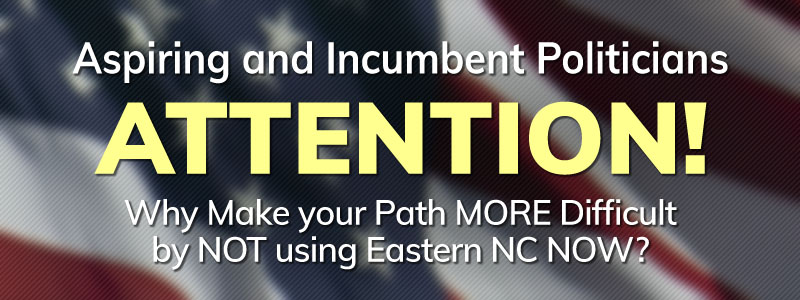Publisher's note: The author of this post is Katherine Restrepo, who is Health and Human Services Policy Analyst for the John Locke Foundation. She is a contributor to the Carolina Journal, John Hood Publisher.
RALEIGH — Medicaid takes a serious bite out of North Carolina's budget. Of the General Fund's $5 billion allocated to the Department of Health and Human Services, Medicaid devours a solid $3 billion. But if we step back and account for Medicaid's total cost — state and federal funds combined — taxpayers foot the bill for a $14 billion program.
The Senate's 2014-15 budget proposal (
PDF) emphasizes a need to rein in (
PDF) Medicaid costs at the state level, which is undoubtedly paramount. Medicaid does cost too much, but a statement such as this needs some explanation.
Historically, the feds pay two-thirds of North Carolina's Medicaid costs, while the state covers the rest. Medicaid is a jointly funded program, and its federal medical assistance percentage, or federal match rate, operates based on a formula dependent on each state's average per-capita income. By statute, the match ranges (
PDF) from a minimum of 50 percent to a maximum of 83 percent. Wealthier states receive less aid from the federal government, while poorer states get more.
One critical reason for Medicaid's exploding costs since the entitlement program's conception in 1965 is that many states rely heavily on federal money. Medicaid's financial design — paired with the fact that each state's federal share is not transferred in a block grant package (rather it is renewed every year (
PDF) based on state and federal income data from the previous three years) — inevitably brings about spendthrift habits.
Avik Roy explains the perverse outcomes of federal match rates in his must-read book, How Medicaid Fails The Poor.
- That means that for every dollar a state spends on its Medicaid program, the federal government will kick in an additional $1.50. It's not every day that a state politician gets to spend one dollar of his constituents' money and gain credit for spending nearly $2.50 in return. But that's how Medicaid works. As a result, irresponsible officials in many states have ratcheted up their Medicaid spending, knowing that taxpayers in other states will be forced to foot a good chunk of the bill.
North Carolina currently pulls down (
PDF) a 65 percent federal match for medical services delivered to Medicaid beneficiaries, but federal shares differ for other services. Administrative services typically receive a 50 percent match, while Obamacare offers a generous 90 percent for the implementation of NC Tracks, North Carolina's Medicaid billing system, and fully funds the use of the state's electronic health records technology.
North Carolina's children's health insurance program,
Health Choice, has an enhanced match rate of 75 percent and will almost completely be covered by the feds in 2015 due to the requirements of the federal health law — another incentive for states to expand their Medicaid programs.
Pretty much every state Medicaid expenditure triggers a federal match. As previously mentioned, lawmakers have been quick to figure out ways in which they can ease pressure on state budgets by maximizing use of federal money. Just check out North Carolina's ongoing budget negotiations. This has become standard fiscal practice.
A prime example can be found in assessments placed on physicians, hospitals, and managed care organizations. (See page 98, line 14, of the Senate's proposed budget (
PDF).) In the mid-1980s, Medicaid providers could volunteer to be assessed, or taxed, by the state, knowing that this would trigger increased federal payments, which the state would distribute to providers in return. Joseph Antos of the American Enterprise Institute explains a scenario cited by the Congressional Research Service:
- For example, hospitals might agree to pay $10 million in provider taxes in exchange for the state increasing Medicaid hospital reimbursement by $20 million. On balance, hospitals gain $10 million in revenue. If the FMAP is 60 percent, the federal government would pay an extra $12 million. That gives the state budget an extra $2 million that it would not otherwise have received.
This artful strategy not only benefited health care entities and providers who served Medicaid patients, but also freed up money in state budgets that could then be used for purposes not limited to Medicaid.
It took some time for the feds to recognize this shell game, but in 1991 the Medicaid Voluntary Contribution and Provider-Specific Tax Amendments placed restrictions on states that prevented them from running up their portion of the Medicaid tab in this way. Today, if states place assessments on health care entities to help pay for Medicaid programs, they must be "broad-based" and "uniform," meaning that the tax leveraged has to fall across an entire specified class of providers.
This dispersion makes the tax less attractive to providers, as some interact with Medicaid less than others. And maybe this rule reflects why the federal government recently rejected North Carolina's assessment on the managed care organizations that deliver care to the mental health/substance abuse/developmental disability population.
Other restrictions require that providers cannot be "held harmless," or guaranteed that they will see a return of the taxed amount.
Despite the enforced scalebacks,
states still enjoy benefits from these assessments. Along with other Medicaid assessments, North Carolina initiated a hospital Medicaid assessment in
2011 under then Gov. Beverly Perdue, tacking on an additional $43 million for the Old North State.
The game of assessments is just one of many reasons why Medicaid costs almost a half trillion dollars nationwide.























